Discover 20 hidden attractions, cool sights, and unusual things to do in Karlsruhe (Germany). Don't miss out on these must-see attractions: Hauptfriedhof, Karlsruhe Zoo, and Karlsruhe Palace. Also, be sure to include Botanischer Garten Karlsruhe in your itinerary.
Below, you can find the list of the most amazing places you should visit in Karlsruhe (Baden-Württemberg).
Table of Contents
Hauptfriedhof
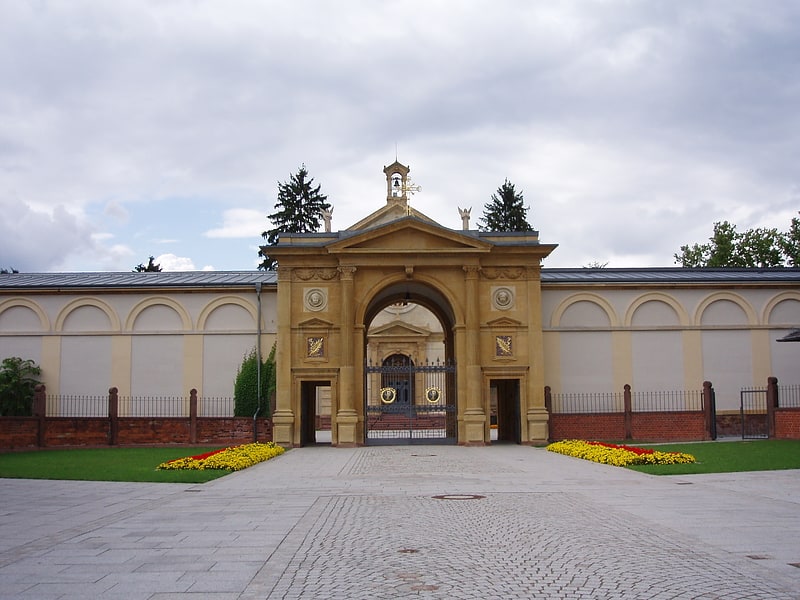
Cemetery in Karlsruhe, Germany. The Hauptfriedhof in Karlsruhe is one of the oldest German communal rural cemeteries. In 1871, the first plans to build a new burial ground outside the city center began. The cemetery was laid out in 1874 by Josef Durm in the Rintheim district, east of the actual city, after the inner-city Alter Friedhof Karlsruhe in the Oststadt had become too small. The main cemetery has grown from its original size of 15.3 hectares in 1873 to over 34 hectares. The graves of more than 32,000 deceased are currently in the cemetery.[1]
Karlsruhe Zoo
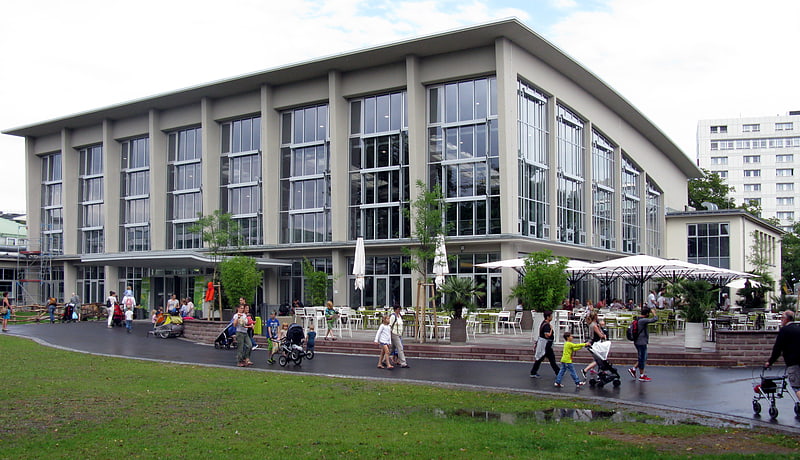
Also known as: Zoologischer Stadtgarten Karlsruhe
Wildlife park and gardens with lakes. Karlsruhe Zoo is located north of Karlsruhe Central Station in the city of Karlsruhe, Germany. It was opened in 1865 and is one of the oldest zoos in Germany. It has about 4,400 animals and 250 species.[2]
Address: Ettlinger Str. 6, 76137 Karlsruhe (Karlsruhe)
Karlsruhe Palace

Also known as: Schloss Karlsruhe
200-year-old castle and history museum. Karlsruhe Palace was built in 1715 for Margrave Charles III William of Baden-Durlach after a dispute with the citizens of his previous capital, Durlach. The city of Karlsruhe has since grown around it. The building is now home to the main museum of the Badisches Landesmuseum.[3]
Address: Schlossbezirk 10, 76131 Karlsruhe (Karlsruhe)
Botanischer Garten Karlsruhe
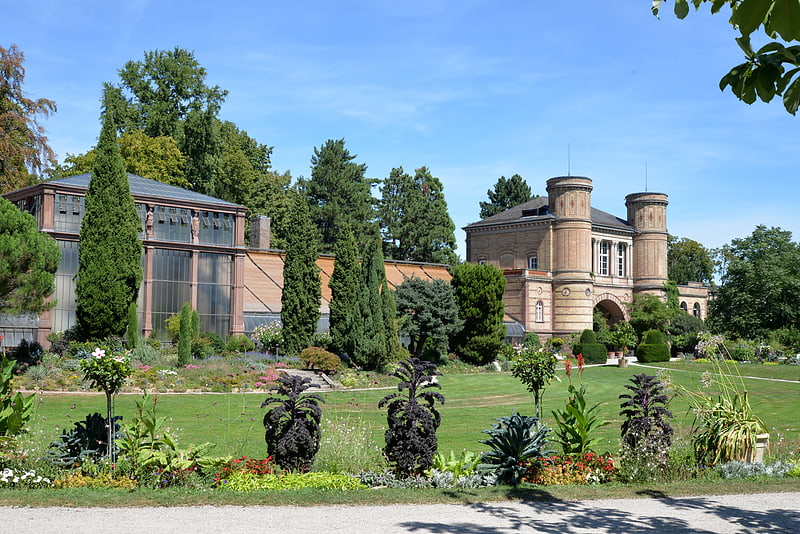
Botanical garden in Karlsruhe, Germany. The Botanischer Garten Karlsruhe is a municipal botanical garden located in Karlsruhe, Baden-Württemberg, Germany. This garden should not be confused with the nearby Botanischer Garten der Universität Karlsruhe operated by the University of Karlsruhe.
The garden was established by Charles III William, Margrave of Baden-Durlach and designed by Karl Christian Gmelin. Between 1853 and 1857, three plant houses were created by architect Heinrich Hübsch. The buildings were severely damaged or destroyed in World War II, but reconstructed as follows: camellia and flower house, rebuilt 1952 for cactus and succulent exhibition; palm house, rebuilt 1955 to 1956; tropical house, restored in the 1950s. The plant houses are open daily except Monday; an admission fee is charged. The grounds contain several rare trees from the 19th century amid newer plantings.[4]
Address: Hans-Thoma-Str. 6, 76131 Karlsruhe (Karlsruhe)
Turmberg
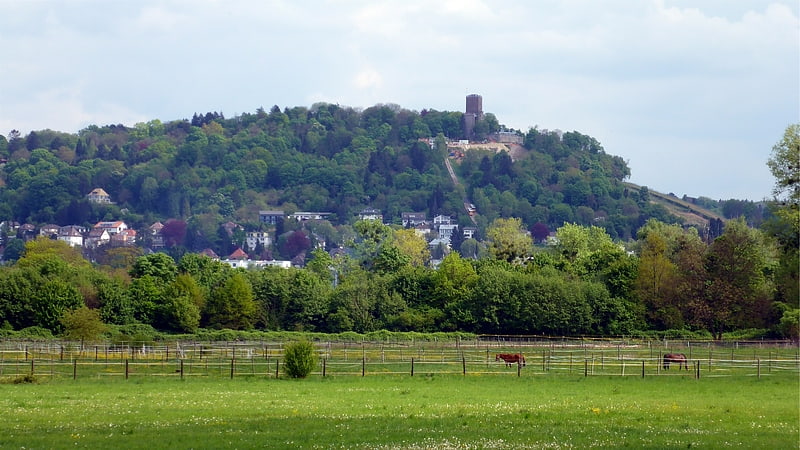
Hill in Germany. The Turmberg is a hill located in Durlach, a suburb of Karlsruhe in Germany. It is home to a castle ruin.
The Turmberg can be reached by the Turmbergbahn, a funicular railway. The original railway used water to counterbalance the rail cars, but now it is run on electricity.[5]
Address: Reichardtstraße 22, 76227 Karlsruhe (Karlsruhe)
Staatliche Kunsthalle Karlsruhe
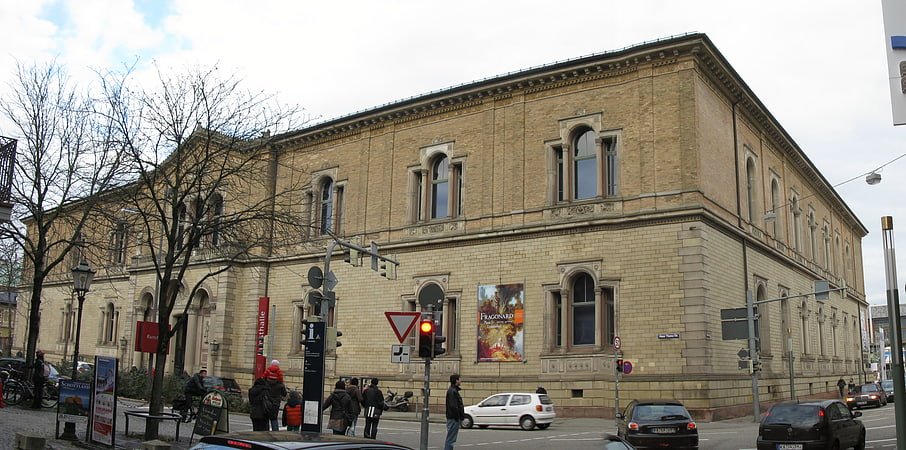
19th-century museum of European art. The Staatliche Kunsthalle is an art museum in Karlsruhe, Germany.
The museum, created by architect Heinrich Hübsch, opened in 1846 after nine years of work in a neoclassical building next to the Karlsruhe Castle and the Karlsruhe Botanical Garden. This historical building with its subsequent extensions now houses the part of the collection covering the 14th to the 19th century while the 20th century is displayed in the nearby building of the Botanical Gardens's former orangery.
The museum notably displays paintings by the Master of the Karlsruhe Passion, Matthias Grünewald (most notably the Tauberbischofsheim Altarpiece), Albrecht Dürer, Hans Baldung, Lucas Cranach the Elder, Hans Burgkmair, Rembrandt, Pieter de Hooch, Peter Paul Rubens, David Teniers the Younger, Hyacinthe Rigaud, Claude Lorrain, Nicolas Poussin, Jean-Baptiste-Siméon Chardin, Eugène Delacroix, Gustave Courbet, Édouard Manet, Camille Pissarro, Claude Monet, Edgar Degas, Auguste Renoir, Paul Cézanne, Paul Gauguin, Caspar David Friedrich, Hans Thoma, Lovis Corinth, August Macke, Ernst Ludwig Kirchner, Erich Heckel, Franz Marc, Jean-Marc Nattier, Max Pechstein, Max Ernst, Kurt Schwitters, Juan Gris, Yves Tanguy, Robert Delaunay, Otto Dix and Fritz von Uhde.[6]
Address: Hans-Thoma-Straße 2, 76133 Karlsruhe (Karlsruhe)
Friedhof Rüppurr
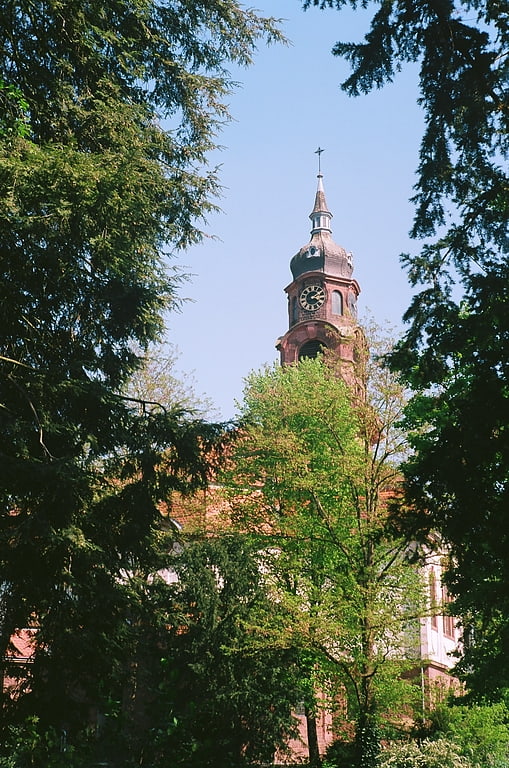
The Friedhof Rüppurr is a grave complex in the southern district of Rüppurr in the city of Karlsruhe in Baden-Württemberg. The cemetery area has a size of approx. 4.2 hectares and is laid out in the style of a rural cemetery.[7]
Badisches Staatstheater Karlsruhe
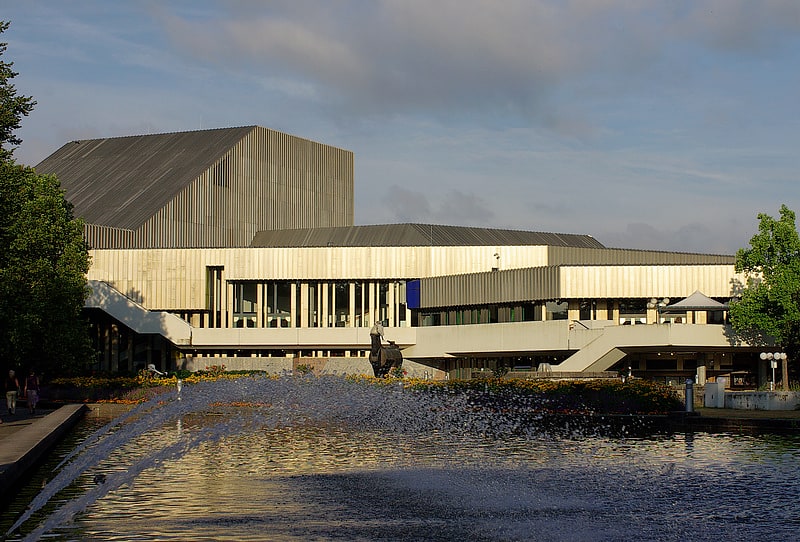
Theatre in Karlsruhe, Germany. The Badisches Staatstheater Karlsruhe is a theatre and opera house in Karlsruhe, Germany. It has existed in its present form and place at Ettlinger Tor since 1975. Achim Thorwald became the Intendant in summer 2002 and held that post until the end of the 2010/11 season. Peter Spuhler succeeded him at the beginning of the 2011/12 season and continues to serve in that post.
The Staatstheater is a Dreisparten venue, housing three performance genres: musical theatre, ballet and theatre, as well as the studio stage in Karlstraße. The Badische Staatskapelle (orchestra) and the Badische Staatsopernchor (opera chorus) are resident companies of the theatre.[8]
Address: Baumeisterstr. 11, 76137 Karlsruhe (Karlsruhe)
ZKM
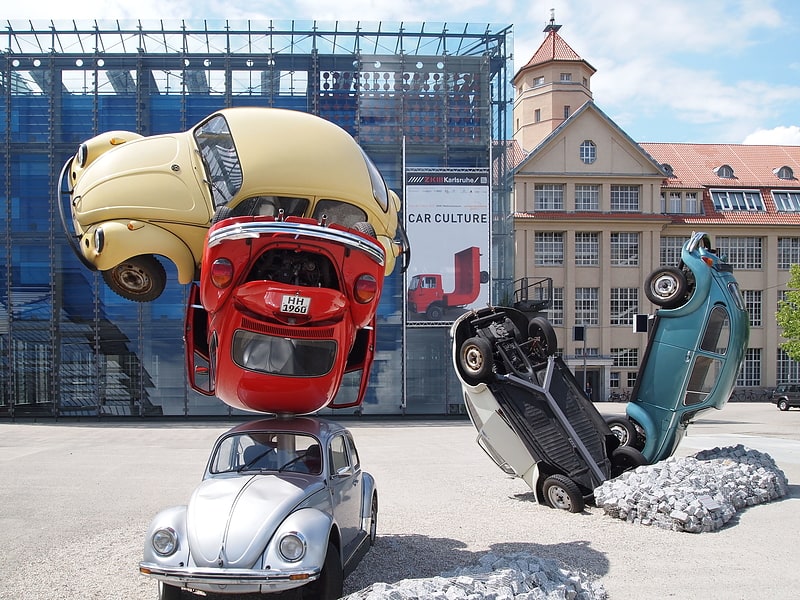
Also known as: Zentrum für Kunst und Medien
Art institute in Karlsruhe, Germany. The ZKM | Center for Art and Media Karlsruhe, a cultural institution, was founded in 1989. and since 1997 is located in a listed industrial building in Karlsruhe, Germany, a former munitions factory. The ZKM organizes special exhibitions and thematic events, conducts research and produces works on the effects of media, digitization, and globalization, and offers public as well as individualized communications and educational programs.
The ZKM houses under one roof exhibition spaces, the research platform Hertz Lab, a library and a media library, thus combining research and production, exhibitions and events, archive and collection. The ZKM operates at the interface of art and science, and addresses new knowledge in the area of new technologies to develop it further. Since the death of founding director Heinrich Klotz (1935–1999), the ZKM has been directed by Peter Weibel, later together with Christiane Riedel. Besides the ZKM, the former munitions factory also houses the associated Karlsruhe University of Arts and Design, and the Städtische Galerie Karlsruhe.[9]
Address: Lorenzstraße 19, 76135 Karlsruhe (Karlsruhe)
Grötzingen Jewish Cemetery
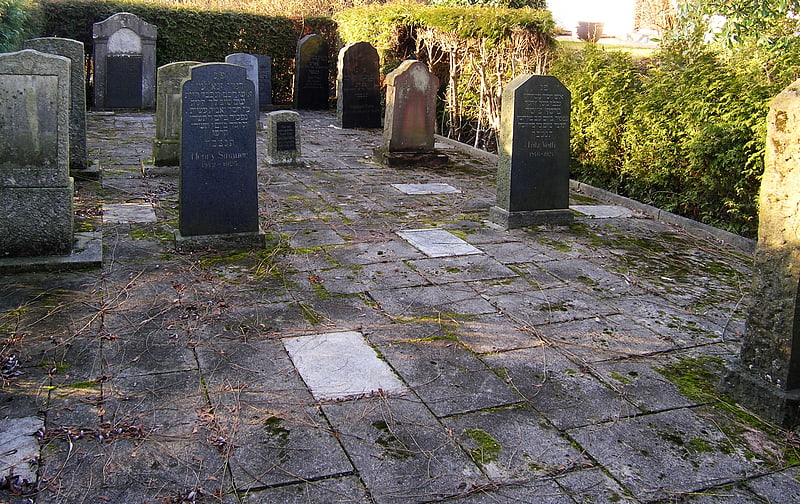
Grötzingen Jewish Cemetery is the smallest Jewish burial place in the city of Karlsruhe, Baden-Württemberg, Germany. It is listed as a national heritage site.[10]
Maxau Rhine Bridges
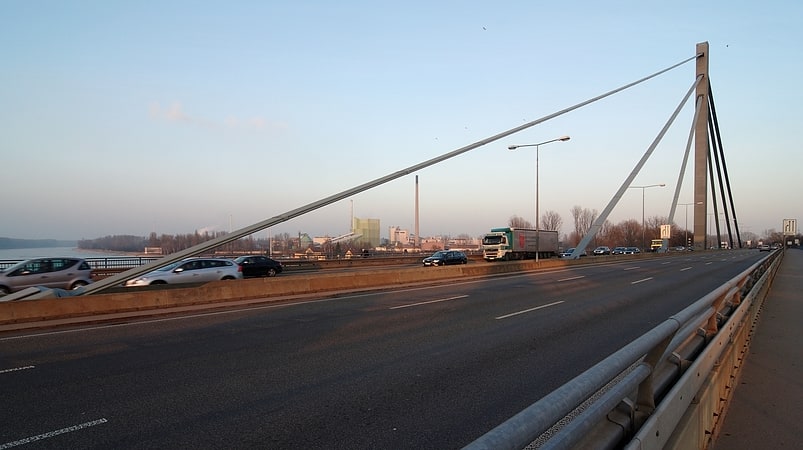
Also known as: Rheinbrücke Maxau
Cable-stayed bridge in Karlsruhe, Germany. The Maxau Rhine Bridges connect the Baden-Württemberg city of Karlsruhe and the Rhineland-Palatinate town of Wörth in Germany. They cross the Rhine in the suburb of Maxau in the Karlsruhe district of Knielingen and the Wörth suburb of Maximiliansau. The Hofgut Maxau, established by Maximilian von Baden, younger son of Charles Frederick, Grand Duke of Baden, that Maxau is named after is located on the east bank of the Rhine near the bridge. Today there are two parallel bridge structures for road and rail traffic.[11]
Address: B 10, 76187 Karlsruhe
Badisches Landesmuseum im Schloss
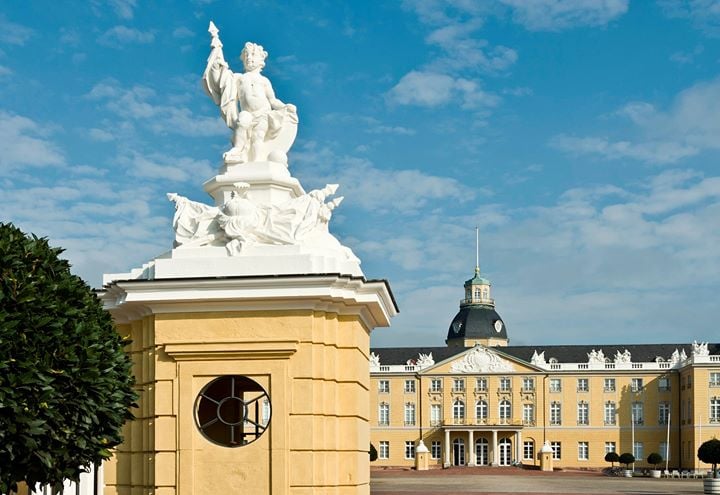
Museum, Specialty museum
Address: Schloßbezirk 10, 76131 Karlsruhe (Karlsruhe)
Karlsruhe Pyramid
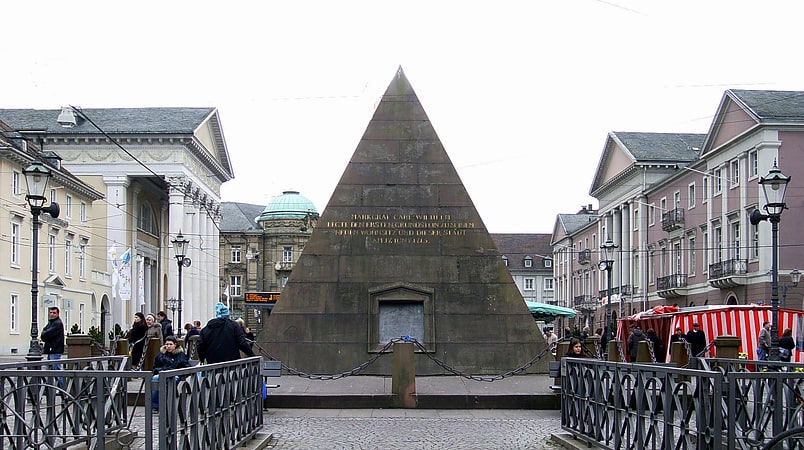
Also known as: Karlsruher Pyramide
Historical landmark in Karlsruhe, Germany. The Karlsruhe Pyramid is a pyramid made of red sandstone, located in the centre of the market square of Karlsruhe, Germany. It was erected in the years 1823–1825 over the vault of the city's founder, Margrave Charles III William. The pyramid is regarded as Karlsruhe's second emblem, the city's absolutist layout in the shape of a folding fan being the first.
The pyramid's central location was originally occupied by the Lutheran Concord Church, a Baroque timber-framed building. When Karlsruhe grew at the beginning of the 19th century, the church became too small and obstructed the southward expansion of the city and its market square. It was demolished in 1807, and initially a wooden pyramid was erected over the city founder's vault as a temporary measure before moving it into the new main church.
Due to lack of resources this plan could not be realised, and 16 years later architect Friedrich Weinbrenner designed the neoclassical stone monument as a permanent replacement for the old church. It has a square footprint and an exterior height of 6.5 metres (21 ft). The interior can be entered through a small square opening, but is only accessible with consent of its former owners (until 1940), the House of Baden. It consists of a vertical sequence of three chambers, the lowest of which is the original burial vault. The city's foundation stone is also located inside the pyramid. The monument is an example of Egyptian Revival architecture, inspired by the burial function of Egyptian pyramids and by similar buildings of the Napoleonic era. The pyramid was not affected by the extensive bombings in the Second World War.[12]
Address: Marktplatz 4, 76133 Karlsruhe (Karlsruhe)
Schlossgarten

State park in Karlsruhe, Germany. The Karlsruhe Schlossgarten, also called Schlosspark, is a landscape park situated north of the Karlsruhe Palace in the center of Karlsruhe. It represents an extension of the palace grounds to the north, serves the people as a local holiday spot and is regularly used for events.[13]
State Museum of Natural History Karlsruhe
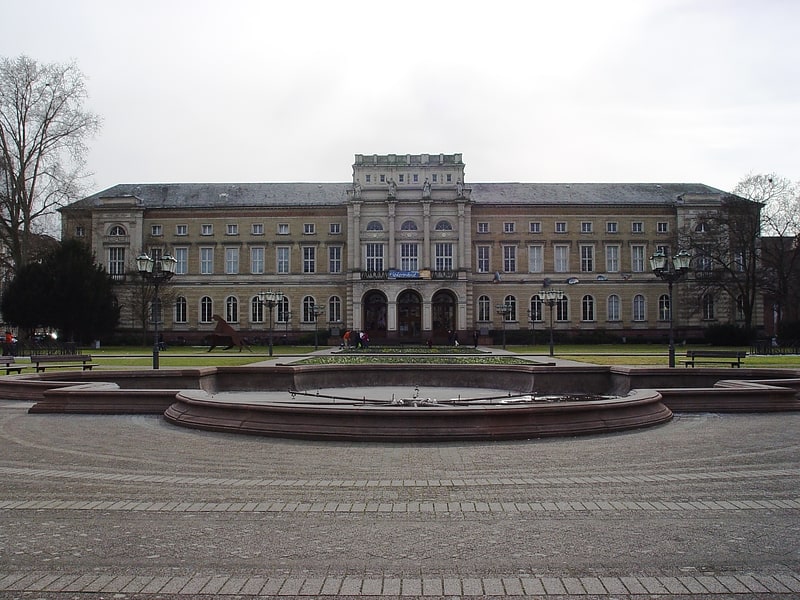
Also known as: Staatliches Museum für Naturkunde Karlsruhe
Museum in Karlsruhe, Germany. The State Museum of Natural History Karlsruhe, abbreviated SMNK, is one of the two state of Baden-Württemberg's natural history museums. Together with the State Museum of Natural History Stuttgart it is one of the most important repositories for state-owned natural history collections.
It is well known for its exhibitions on all aspects of natural history in the city of Karlsruhe and beyond. Every year, the SMNK is visited by about 150,000 people.
Research at the museum mainly deals with various fields of natural history i.e. geology, paleontology, taxonomy, biogeography, and ecology. The SMNK is part of the national networks German Natural History Research Collections (DNFS), the Humboldt-Ring (Association of Research Museums) and of the International Council of Museums (ICOM).
The SMNK looks back at a long history as it emerged from the cabinet of natural history of Landgravine Caroline Louise of Hesse-Darmstadt during the mid 18th century.[14]
Address: Erbprinzenstraße 13, 76133 Karlsruhe (Karlsruhe)
Sandkorn-Theater
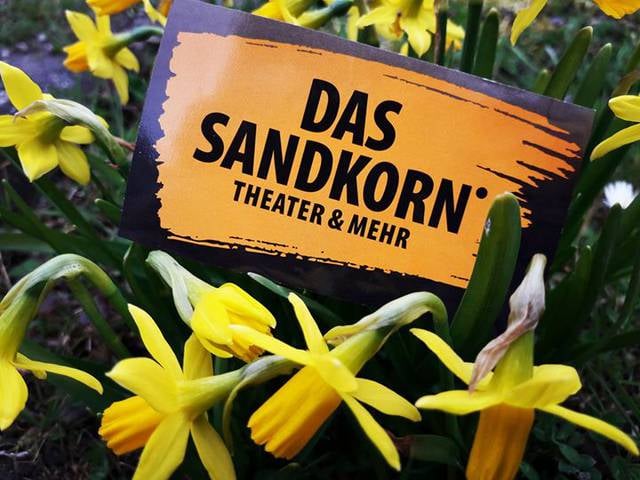
Theatre in Karlsruhe, Germany. Sandkorn-Theater is a theatre in Karlsruhe, Baden-Württemberg, Germany.[15]
Address: Kaiserallee 11, Karlsruhe (Karlsruhe)
Städtische Galerie
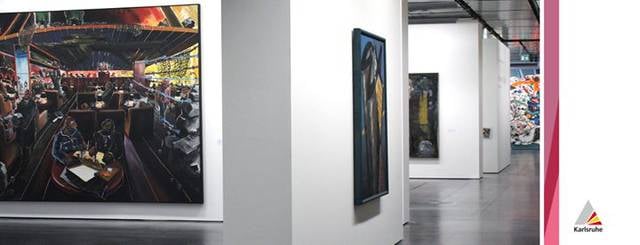
Museum
Address: Lorenzstraße 27, 76135 Karlsruhe (Karlsruhe)
Botanischer Garten des KIT

The Botanischer Garten der Universität Karlsruhe is a botanical garden maintained by the Karlsruhe Institute of Technology directorate of Peter Nick. It is located at Am Fasanengarten 2, Karlsruhe, Baden-Württemberg, Germany, and is open weekdays and Sundays; admission is free.
The garden contains a total of 5,700 plant species, including 1,930 endangered species per the IUCN Red List or CITES conventions. It has three major missions:
- Research, particularly in understanding the molecular basis of development, growth, and metabolism, with specific projects in Arabidopsis thaliana, Gnetum gnemon, Nicotiana tabacum, Oryza sativa, and Vitis vinifera. The garden currently cultivates over 50 species of wild grape vines for use in research against downy mildew, as well as a collection of wild rice species from all over the world.
- Teaching, for which the garden provides plant material for the courses and is used for field trips and the comparison of plant types.
- Conservation of rare species and varieties of plants, including Althaea hirsuta, Androsace septentivionalis, Apium graveolens, Campanula cervicaria, Cnidium dubium, Equisetum × trachyodon, Gentiana cruziata, Leonurus cardica, Ludwigia palustris, Marsilea quadrifolia, Polystichum braunii, Populus nigra, Salix repens, Scirpus carinatus, Scirpus triqueter, Stipa ioannis, Taraxacum acoriferum, Taraxacum balticiforme, Taraxacum germanicum, Taraxacum pollichii, Trapa natans, Vaccinium x intermedia, Viola uliginosa, and Vitis vinifera L. ssp. sylvestris. It also maintains good collections of succulents and orchids.
Address: Am Fasanengarten 2, 76131 Karlsruhe (Karlsruhe)
Verkehrsmuseum Karlsruhe
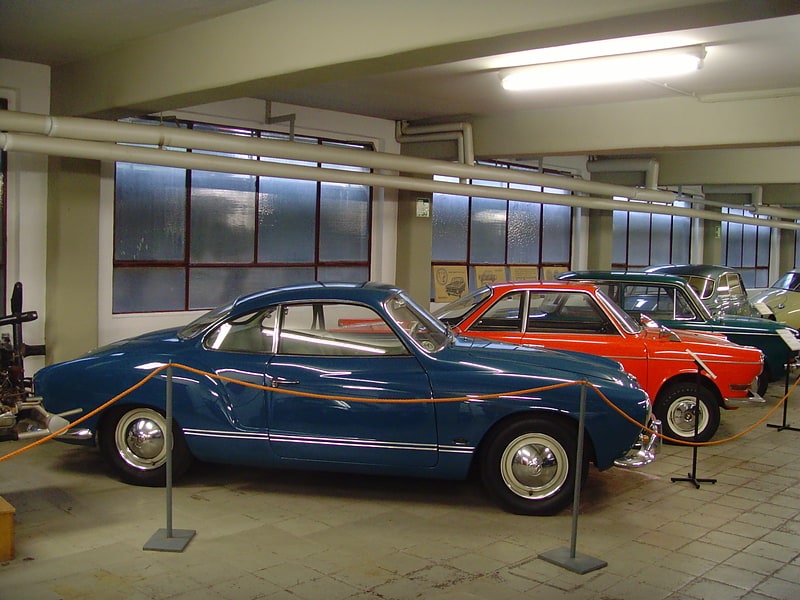
The Karlsruhe Museum of Transport exhibits the history of transport from the beginning of the 19th century to the present. The collection includes historic bicycles, motorcycles and cars as well as railroad models. In addition, technical inventions are illustrated as well as developers from the region, such as Karl Drais and Felix Wankel.
The traffic museum is run by the Deutsche Verkehrswacht im Stadt- und Landkreis Karlsruhe e. V. It is run on a voluntary basis. Since 1969, it has been located in a former factory for electrical appliances in Südstadt.
Address: Werderstraße 63, 76137 Karlsruhe (Karlsruhe)
Karlsburg
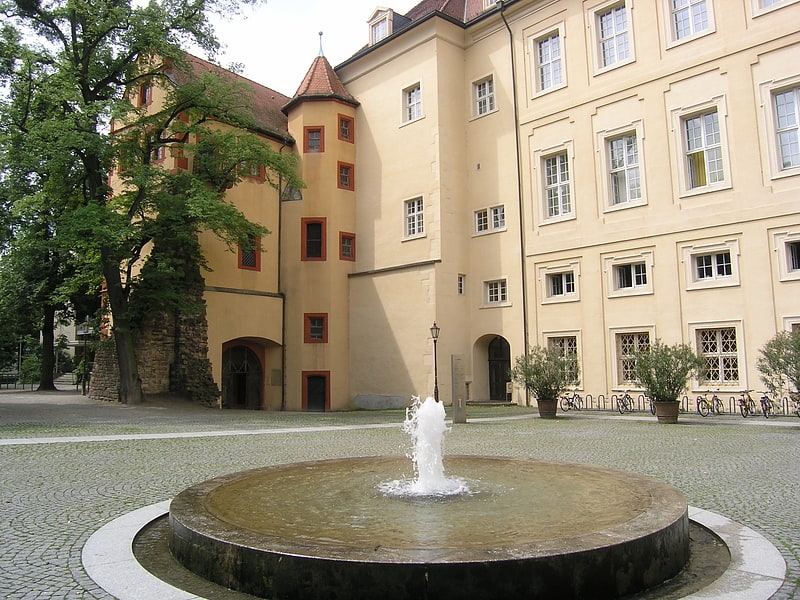
Historical landmark in Karlsruhe, Germany. Karlsburg Castle in the Durlach district of Karlsruhe characterizes the history of the Baden since 1563. Only the Prinzessinnenbau of the historical building still stands.
Pforzheim was the residence of Margrave Charles II, until he decided in 1563 to move to Durlach. What, if anything, the citizens of Durlach offered him during the negotiations is unknown. Charles decided to extende the medieval Karlsburg Castle into a palace and make it his residence. His successors further extended the castle, until the city was occupied by French troops in 1689. The French burned down the city and the castle. In 1698, Margrave Frederick Magnus returned from exile in Basel and started rebuilding the castle. Frederick had grandiose plans, but no money and the margraviate had been devastated by the war. A dispute erupted with the citizens of Durlach, who refused to support the rebuilding effort. By 1703 two wings had been completed and the margrave had moved in, when the project was suspended indefinitely.
Frederick's son and successor, Margrave Charles III William, decided in 1715 to end the discussion and relocate his residence to a new palace outside Durlach. He founded the city of Karlsruhe, centered on his new palace. Charles and his court moved into the new palace in 1718. His wife, however, chose to remain in Durlach until her death in 1743.
The Karlsburg was later used as an administrative office and even as a barracks. The Pfinzgau Museum has been housed in the castle since 1924. In 1964, a wing was demolished to make room for the Castle School at Durlach. The castle was extensively renovated from 1973 to 1988. Today, it houses the registry office, the Pfinzgau Museum, the Carpathian-German Museum, classrooms for adult education and the Margrave School, the historic banquet hall and the Durlach city library.[17]
Address: Pfinztalstrasse 9, Karlsruhe (Karlsruhe)